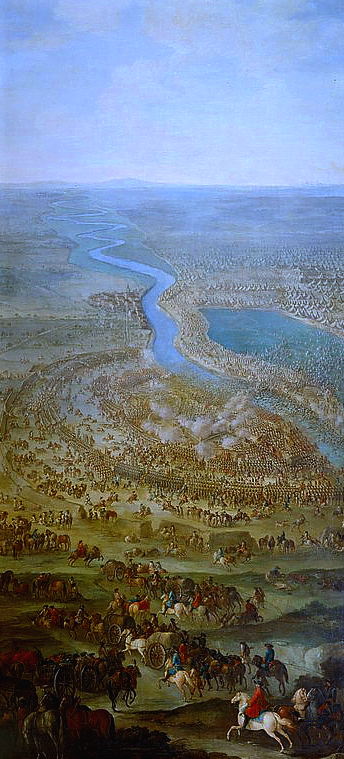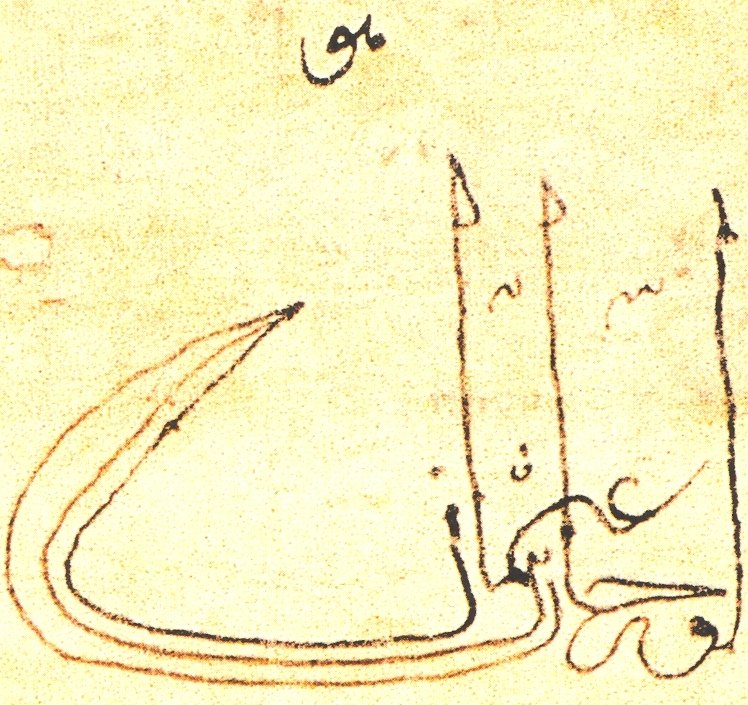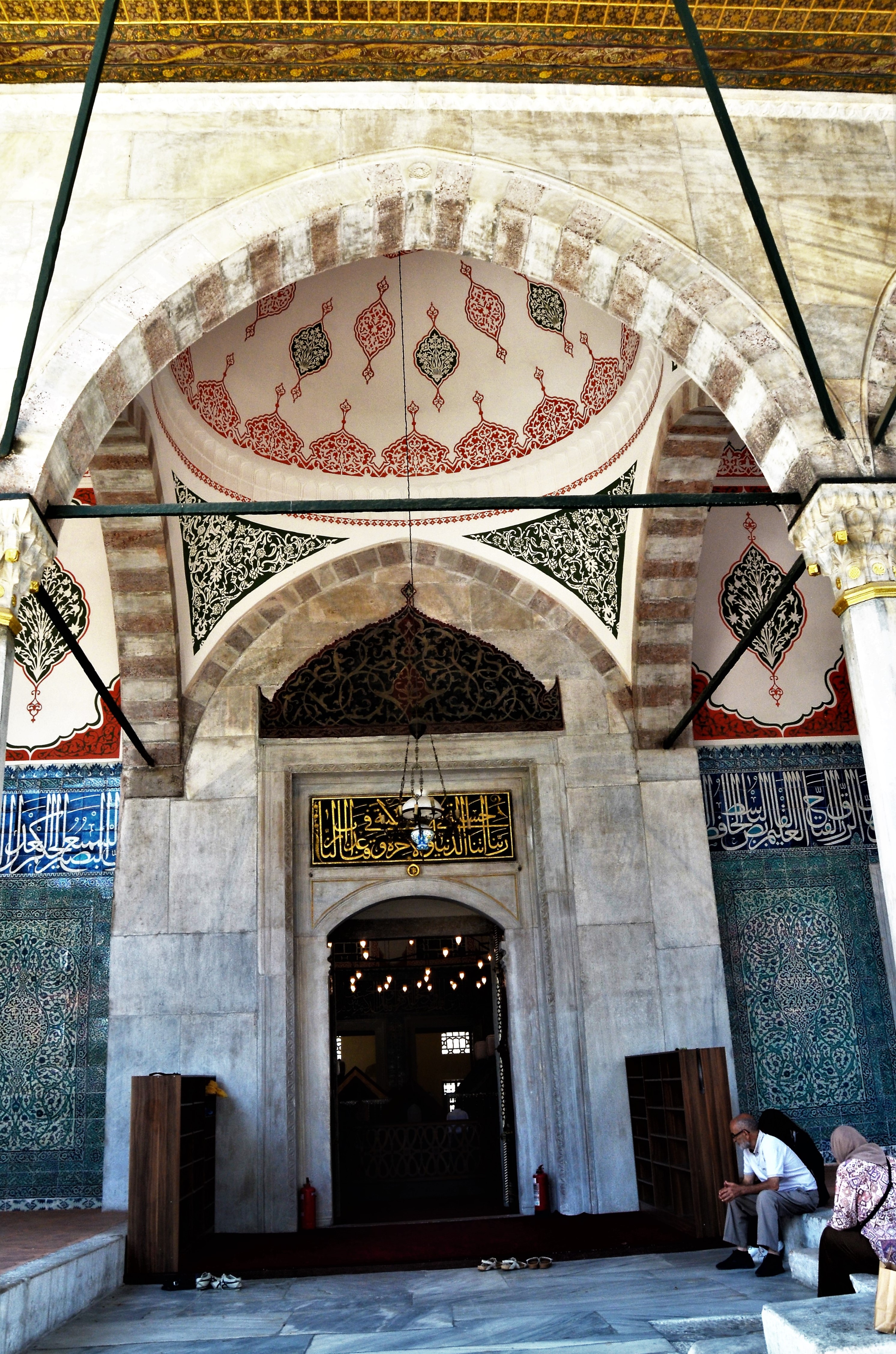|
Sultan Mustafa II
Mustafa II (; ota, مصطفى ثانى ''Muṣṭafā-yi sānī''; 6 February 1664 – 29 December 1703) was the Sultan of the Ottoman Empire from 1695 to 1703. Early life He was born at Edirne Palace on 6 February 1664. He was the son of Sultan Mehmed IV (1648–87) and Gülnuş Sultan, originally named Evmenia, who was of Greek Cretan descent. Mustafa II abdicated in favor of his brother Ahmed III (1703–30) in 1703. Born in Edirne, Mustafa's childhood passed here. While he was in Mora Yenişehiri with his father in 1669, he took the first lesson from Mehmed Efendi at the bed-i besinele ceremony. The writing teacher was the famous calligrapher Hafiz Osman. In 1675, he and his brother Ahmed were circumcised and his sisters Hatice Sultan and Fatma Sultan were married. The celebration lasted 20 days. Reign Great Turkish War During his reign the Great Turkish War, which had started in 1683, was still going on. After the failure of the second Siege of Vienna (1683) the Holy ... [...More Info...] [...Related Items...] OR: [Wikipedia] [Google] [Baidu] |
Amir Al-Mu'minin
Amir al-Mu'minin ( ar, أَمِير ٱلْمُؤْمِنِين, amīr al-muʾminīn) is an Arabic title designating the supreme leader of an Islamic community. It is usually translated as "Commander of the Faithful", though sometimes also as "Prince of the Believers", a translation deriving from the fact that the word emir, is used as a princely title in states ruled by the royalty or monarchies. However, according to Oriental studies, orientalist historian H. A. R. Gibb, this translation is "neither philologically nor historically correct". History Historical usage The title derives from the common Arabic term designating a military commander, , and was used for Muslim military commanders already during the lifetime of Muhammad. In this capacity it was, for example, borne by the Muslim commander at the Battle of al-Qadisiyya. On his accession in 634, Omar, Umar ibn Khattab (), the Rashidun, Second Rashidun Caliph, was given the title. According to At-Tabaqat al Kubra, When Abu ... [...More Info...] [...Related Items...] OR: [Wikipedia] [Google] [Baidu] |
Edirne
Edirne (, ), formerly known as Adrianople or Hadrianopolis (Greek: Άδριανούπολις), is a city in Turkey, in the northwestern part of the province of Edirne in Eastern Thrace. Situated from the Greek and from the Bulgarian borders, Edirne was the second capital city of the Ottoman Empire from 1369 to 1453, before Constantinople became its capital. The city is a commercial centre for woven textiles, silks, carpets and agricultural products and has a growing tourism industry. In 2019 its estimated population was 185,408. Edirne has an attractive location on the rivers Meriç and Tunca and has managed to withstand some of the unattractive development that mars the outskirts of many Turkish cities. The town is famous in Turkey for its liver. ''Ciğer tava'' (breaded and deep-fried liver) is often served with a side of cacık, a dish of diluted strained yogurt with chopped cucumber. Names and etymology The city was founded and named after the Roman emperor Hadr ... [...More Info...] [...Related Items...] OR: [Wikipedia] [Google] [Baidu] |
Siege Of Vienna (1683)
The Battle of Vienna; pl, odsiecz wiedeńska, lit=Relief of Vienna or ''bitwa pod Wiedniem''; ota, Beç Ḳalʿası Muḥāṣarası, lit=siege of Vienna#Etymology, Beç; tr, İkinci Viyana Kuşatması, lit=second siege of Vienna took place at Kahlenberg Mountain near Vienna on 1683 after the imperial city had been besieged by the Ottoman Empire for two months. The battle was fought by the Holy Roman Empire (led by the Habsburg monarchy and the Polish–Lithuanian Commonwealth, both under the command of King John III Sobieski) against the Ottomans and their Vassal and tributary states of the Ottoman Empire, vassal and tributary states. The battle marked the first time the Commonwealth and the Holy Roman Empire had cooperated militarily against the Ottomans, and it is often seen as a turning point in history, after which "the Ottoman Turks ceased to be a menace to the Christian world". In the ensuing war that lasted until 1699, the Ottomans lost almost all of Hungary to the Le ... [...More Info...] [...Related Items...] OR: [Wikipedia] [Google] [Baidu] |
Great Turkish War
The Great Turkish War (german: Großer Türkenkrieg), also called the Wars of the Holy League ( tr, Kutsal İttifak Savaşları), was a series of conflicts between the Ottoman Empire and the Holy League consisting of the Holy Roman Empire, Poland-Lithuania, Venice, Russia, and Habsburg Hungary. Intensive fighting began in 1683 and ended with the signing of the Treaty of Karlowitz in 1699. The war was a defeat for the Ottoman Empire, which for the first time lost large amounts of territory, in Hungary and the Polish–Lithuanian Commonwealth, as well as part of the western Balkans. The war was significant also by being the first time that Russia was involved in an alliance with Western Europe. The French did not join the Holy League, as France had agreed to reviving an informal Franco-Ottoman alliance in 1673, in exchange for Louis XIV being recognized as a protector of Catholics in the Ottoman regime. Initially, Louis XIV took advantage of the start of the war to extend Fra ... [...More Info...] [...Related Items...] OR: [Wikipedia] [Google] [Baidu] |
Cretan
Crete ( el, Κρήτη, translit=, Modern: , Ancient: ) is the largest and most populous of the Greek islands, the 88th largest island in the world and the fifth largest island in the Mediterranean Sea, after Sicily, Sardinia, Cyprus, and Corsica. Crete rests about south of the Greek mainland, and about southwest of Anatolia. Crete has an area of and a coastline of 1,046 km (650 mi). It bounds the southern border of the Aegean Sea, with the Sea of Crete (or North Cretan Sea) to the north and the Libyan Sea (or South Cretan Sea) to the south. Crete and a number of islands and islets that surround it constitute the Region of Crete ( el, Περιφέρεια Κρήτης, links=no), which is the southernmost of the 13 Modern regions of Greece, top-level administrative units of Greece, and the fifth most populous of Greece's regions. Its capital and largest city is Heraklion, on the north shore of the island. , the region had a population of 636,504. The Dodecanes ... [...More Info...] [...Related Items...] OR: [Wikipedia] [Google] [Baidu] |
Greeks
The Greeks or Hellenes (; el, Έλληνες, ''Éllines'' ) are an ethnic group and nation indigenous to the Eastern Mediterranean and the Black Sea regions, namely Greece, Cyprus, Albania, Italy, Turkey, Egypt, and, to a lesser extent, other countries surrounding the Mediterranean Sea. They also form a significant diaspora (), with Greek communities established around the world.. Greek colonies and communities have been historically established on the shores of the Mediterranean Sea and Black Sea, but the Greek people themselves have always been centered on the Aegean and Ionian seas, where the Greek language has been spoken since the Bronze Age.. Until the early 20th century, Greeks were distributed between the Greek peninsula, the western coast of Asia Minor, the Black Sea coast, Cappadocia in central Anatolia, Egypt, the Balkans, Cyprus, and Constantinople. Many of these regions coincided to a large extent with the borders of the Byzantine Empire of the late 11th cent ... [...More Info...] [...Related Items...] OR: [Wikipedia] [Google] [Baidu] |
Battle Of Zenta
The Battle of Zenta, also known as the Battle of Senta, was fought on 11 September 1697, near Zenta, Ottoman Empire (modern-day Senta, Serbia), between Ottoman and Holy League armies during the Great Turkish War. The battle was the most decisive engagement of the war, and it saw the Ottomans suffer an overwhelming defeat by an Imperial force half as large sent by Emperor Leopold I. In 1697 a last major Turkish attempt to conquer Hungary was made; sultan Mustafa II personally led the invasion force. In a surprise attack, Habsburg Imperial forces commanded by Prince Eugene of Savoy engaged the Turkish army while it was halfway through crossing the Tisza river at Zenta, 80 miles northwest of Belgrade. The Habsburg forces inflicted thousands of casualties, including the Grand Vizier, dispersed the remainder, captured the Ottoman treasury, and came away with such emblems of high Ottoman authority as the Seal of the Empire which had never been captured before. The European coalitio ... [...More Info...] [...Related Items...] OR: [Wikipedia] [Google] [Baidu] |
Sultan
Sultan (; ar, سلطان ', ) is a position with several historical meanings. Originally, it was an Arabic abstract noun meaning "strength", "authority", "rulership", derived from the verbal noun ', meaning "authority" or "power". Later, it came to be used as the title of certain rulers who claimed almost full sovereignty (i.e., not having dependence on any higher ruler) without claiming the overall caliphate, or to refer to a powerful governor of a province within the caliphate. The adjectival form of the word is "sultanic", and the state and territories ruled by a sultan, as well as his office, are referred to as a sultanate ( '. The term is distinct from king ( '), despite both referring to a sovereign ruler. The use of "sultan" is restricted to Muslim countries, where the title carries religious significance, contrasting the more secular ''king'', which is used in both Muslim and non-Muslim countries. Brunei and Oman are the only independent countries which retain the ti ... [...More Info...] [...Related Items...] OR: [Wikipedia] [Google] [Baidu] |
Sunni Islam
Sunni Islam () is the largest branch of Islam, followed by 85–90% of the world's Muslims. Its name comes from the word '' Sunnah'', referring to the tradition of Muhammad. The differences between Sunni and Shia Muslims arose from a disagreement over the succession to Muhammad and subsequently acquired broader political significance, as well as theological and juridical dimensions. According to Sunni traditions, Muhammad left no successor and the participants of the Saqifah event appointed Abu Bakr as the next-in-line (the first caliph). This contrasts with the Shia view, which holds that Muhammad appointed his son-in-law and cousin Ali ibn Abi Talib as his successor. The adherents of Sunni Islam are referred to in Arabic as ("the people of the Sunnah and the community") or for short. In English, its doctrines and practices are sometimes called ''Sunnism'', while adherents are known as Sunni Muslims, Sunnis, Sunnites and Ahlus Sunnah. Sunni Islam is sometimes referred ... [...More Info...] [...Related Items...] OR: [Wikipedia] [Google] [Baidu] |
Tughra
A tughra ( ota, طغرا, ṭuġrā) is a calligraphic monogram, seal or signature of a sultan that was affixed to all official documents and correspondence. Inspired by the tamgha, it was also carved on his seal and stamped on the coins minted during his reign. Very elaborate decorated versions were created for important documents that were also works of art in the tradition of Ottoman illumination, such as the example of Suleiman the Magnificent in the gallery below. The tughra was designed at the beginning of the sultan's reign and drawn by the court calligrapher or '' nişancı'' on written documents. The first tughra examples are from the 14th century. Tughras served a purpose similar to the cartouche in ancient Egypt or the Royal Cypher of British monarchs. Every Ottoman sultan had his own individual tughra. Etymology There are two main schools of thought on the origins of the word tughra. The first sees it derived from a Turkic secretarial emblem called ''tughragh'', an ... [...More Info...] [...Related Items...] OR: [Wikipedia] [Google] [Baidu] |
New Mosque (Istanbul)
The New Mosque ( tr, Yeni Cami}, , originally named the Valide Sultan Mosque, tr, Valide Sultan Camii) and later New Valide Sultan Mosque ( tr, Yeni Valide Sultan Camii) after its partial reconstruction and completion between 1660 and 1665, is an Ottoman imperial mosque located in the Eminönü quarter of Istanbul, Turkey. It is situated on the Golden Horn, at the southern end of the Galata Bridge. The mosque is an example of the Sultanate of Women period in Ottoman Empire. History Valide Sultan Mosque The construction of the mosque began in 1597. It was ordered by Safiye Sultan, who was the wife of Sultan Murad III and later Valide Sultan (Queen Mother) of Sultan Mehmed III. She ordered the mosque in her capacity as ''Valide Sultan'', two years after Mehmed III's ascension to the Ottoman throne in 1595, hence the original formal name "Valide Sultan Mosque". The original architect was Davut Ağa, an apprentice to the great Mimar Sinan. However, Davut Ağa died in 1599 a ... [...More Info...] [...Related Items...] OR: [Wikipedia] [Google] [Baidu] |
Tomb Of Turhan Sultan
The Tomb of Turhan Sultan ( tr, Turhan Sultan Türbesi) is the mausoleum of five Ottoman sultans, located at Fatih in Istanbul, Turkey. It was built in 1663 for Turhan Sultan, chief queen consort of Sultan Ibrahim and mother of Sultan Mehmed IV. Overview The tomb is situated on the corner of Bankacılar St. and Yeni Cami St. in Eminönü quarter of Fatih in Istanbul. It was built in 1663 for Haseki sultan and Valide sultan Turhan Sultan (c. 1627–1683). She was the chief queen consort of Sultan Ibrahim (reigned 1640–1648) and the mother of Sultan Mehmed IV (r. 1648–1687). The tomb was built as part of the New Mosque complex, of which construction was started in 1598 by Safiye Sultan (c. 1550 – c. 1619), the chief queen consort of Sultan Murad III (r. 1574–1595), the mother of Sultan Mehmed III (r. 1595–1603) as well as the grandmother of Sultans Ahmed I (r. 1603–1617) and Mustafa I (r. 1617–1618, 1622–1623), and completed by Turhan Hatice Sultan in 1665. The ... [...More Info...] [...Related Items...] OR: [Wikipedia] [Google] [Baidu] |








